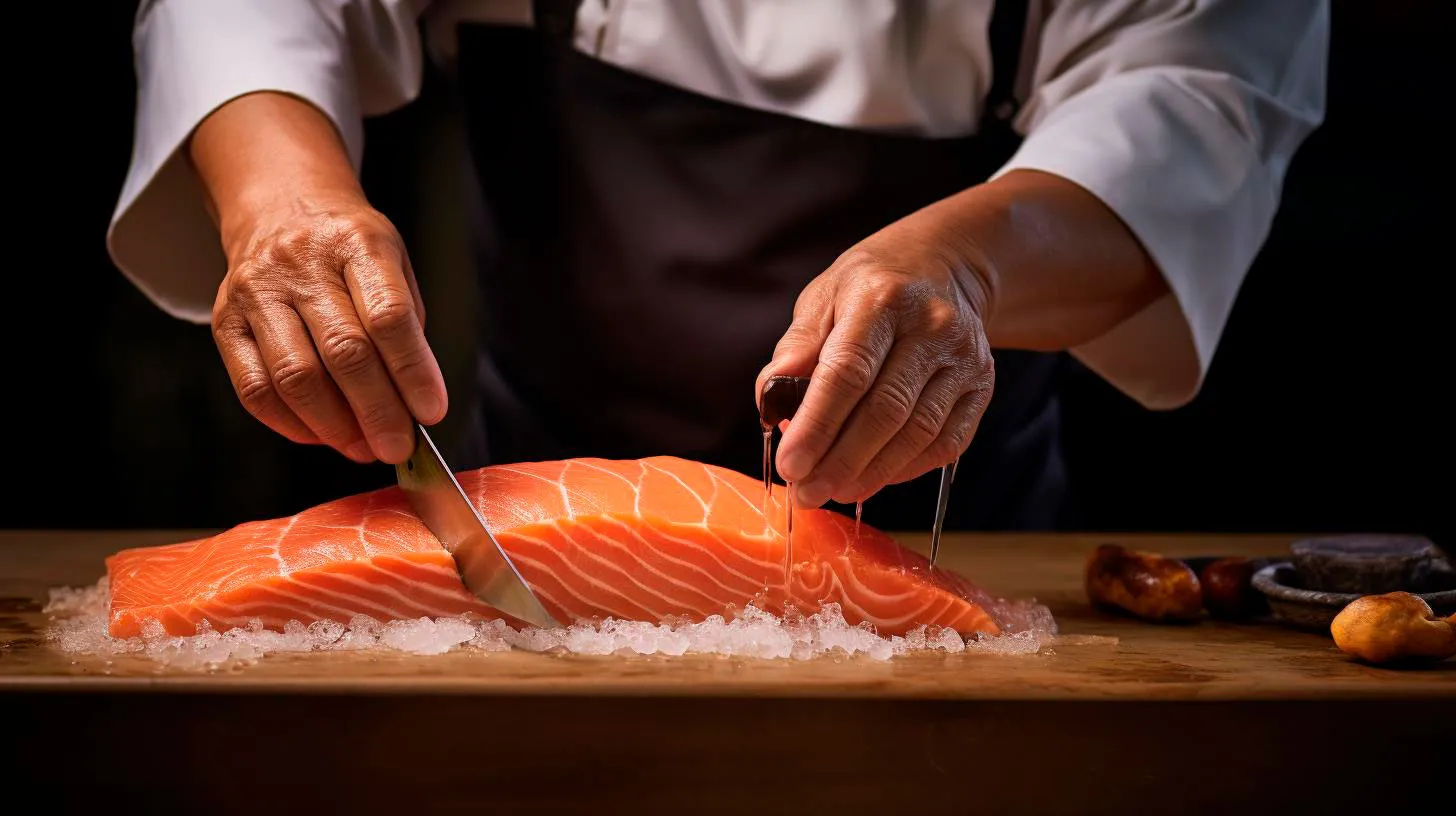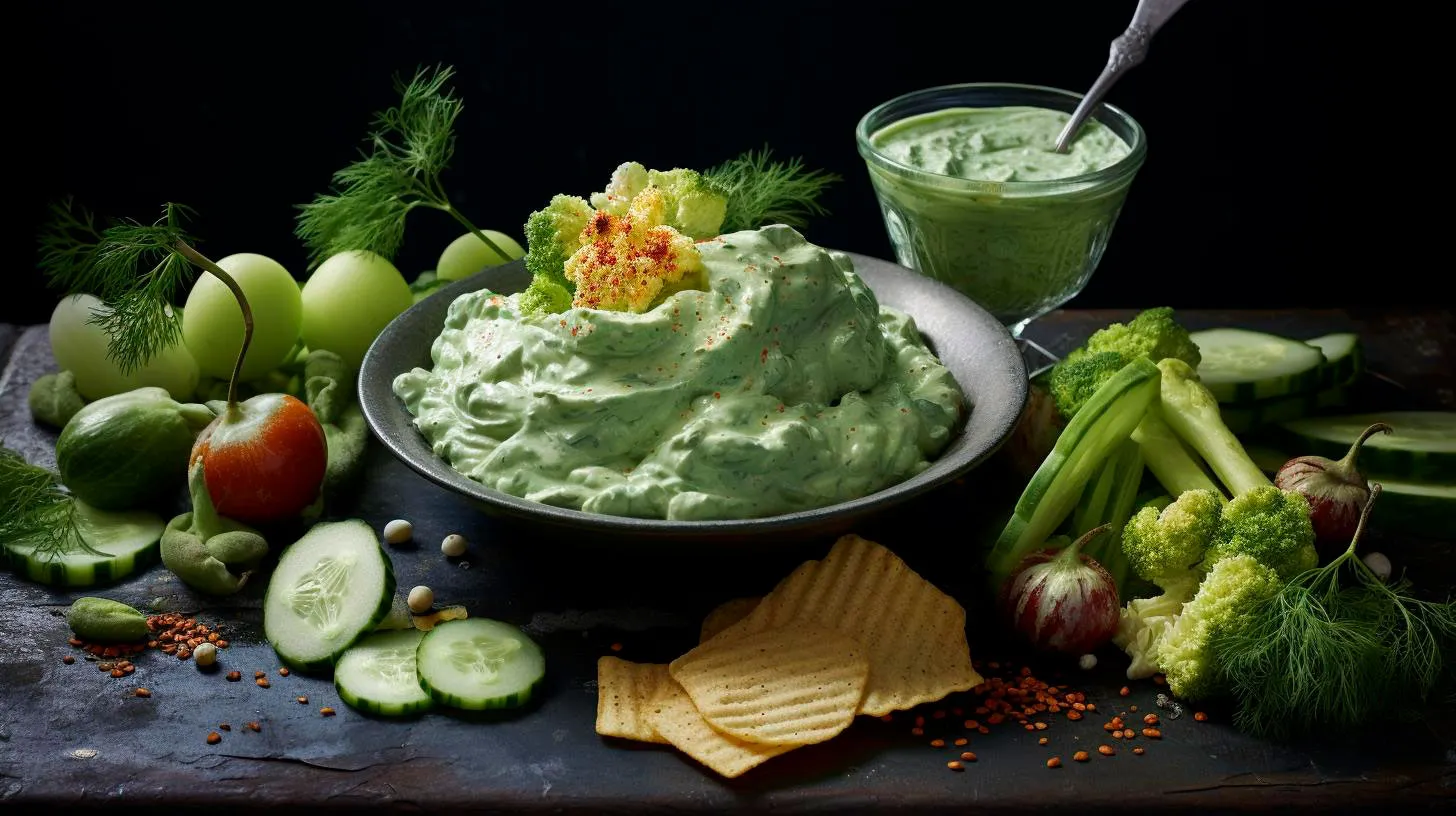Exploring Eco-Friendly Seafood Options
In this article, we will explore the concept of eco-friendly seafood and highlight the benefits of making conscious choices. Let’s dive in!
The Importance of Sustainable Seafood
As our oceans face numerous threats, such as overfishing, habitat destruction, and pollution, it is more crucial than ever to embrace sustainable seafood practices. By choosing sustainable seafood, we can help preserve marine ecosystems, protect endangered species, and maintain a healthy balance in our oceans. It is estimated that sustainable fishing practices can potentially increase fish stocks by 23% globally, ensuring a bountiful future for all.
Key Takeaways:
- Choosing sustainable seafood options helps preserve marine ecosystems.
- Supporting sustainable practices can increase global fish stocks by 23%.
- Eco-friendly seafood promotes the longevity of endangered species.
Identifying Eco-Friendly Seafood Options
When it comes to eco-friendly seafood, there are several factors to consider. Here are a few guidelines to help you make sustainable choices:
- Know your fish: Some species reproduce more quickly than others. Opt for fish that are known for their resilience and shorter life cycles.
- Check for certifications: Look for labels from trusted organizations, such as the Marine Stewardship Council (MSC) or Aquaculture Stewardship Council (ASC). These certifications indicate that the seafood was sourced sustainably.
- Avoid overfished species: Stay informed about endangered or overfished species and avoid consuming them. Some examples include Bluefin Tuna and Chilean Sea Bass.
- Support local fisheries: By buying seafood from local sources, you are reducing carbon emissions associated with long-distance transportation while supporting your local economy.
- Ditch the bycatch: Bycatch refers to unintentionally caught species during fishing operations. Choose seafood that is caught using methods that minimize bycatch.
Key Takeaways:
- Choose fish with shorter life cycles and better reproductive rates.
- Look for certifications like MSC or ASC to ensure sustainable sourcing.
- Stay informed about endangered species and avoid consuming them.
- Support local fisheries to reduce carbon emissions and promote the local economy.
- Prefer seafood caught using methods that minimize bycatch.
The Benefits of Eco-Friendly Seafood
Opting for eco-friendly seafood options brings numerous benefits, not only for the environment but also for your health. Let’s take a closer look:
- Preserving marine ecosystems: Sustainable fishing practices help maintain the delicate balance of marine ecosystems and ensure the survival of various species.
- Protecting endangered species: Making sustainable choices reduces the pressure on endangered fish species and promotes their recovery.
- Better food quality: Eco-friendly seafood is often fresher, as it is sourced from local, sustainable fisheries. This ensures higher nutritional value and better taste.
- Health benefits: Seafood is an excellent source of lean protein, omega-3 fatty acids, vitamins, and minerals. By choosing sustainable options, you can enjoy these health benefits without contributing to environmental degradation.
- Supporting coastal communities: Supporting local, sustainable fishing practices helps coastal communities thrive economically, preserving their cultural heritage.
Key Takeaways:
- Eco-friendly seafood options help preserve marine ecosystems.
- Choosing sustainable options reduces pressure on endangered species.
- Eco-friendly seafood is often fresher and of higher quality.
- Seafood provides essential nutrients and health benefits.
- Supporting sustainable fishing practices promotes the well-being of coastal communities.
With the rising interest in eco-friendly practices, sustainable seafood options are becoming more readily available. By making informed choices, you can contribute to the preservation of our oceans while relishing the delightful flavors of seafood. Remember, every small step towards sustainability counts, so let’s be conscious consumers and enjoy seafood responsibly!
Supporting Ocean Conservation through Tasty Meals
As responsible individuals, it’s crucial for us to take action and support ocean conservation efforts in any way we can. One unexpected and delicious way to contribute to ocean conservation is through our food choices. By making mindful decisions about the seafood we consume, we can help protect marine ecosystems and ensure the sustainability of our oceans’ resources.
The Importance of Sustainable Seafood
Overfishing remains one of the biggest challenges our oceans are currently facing. According to the Food and Agriculture Organization of the United Nations (FAO), approximately 33% of global fish stocks are being harvested at unsustainable levels. Choosing sustainable seafood can directly impact the health of the oceans and the long-term viability of fish populations. When we opt for sustainably harvested seafood, we support responsible fishing practices that aim to minimize environmental impact and protect marine biodiversity.
Key Takeaways:
- Choosing sustainable seafood helps protect marine ecosystems and fish populations.
- Sustainable fishing practices minimize environmental impact and preserve marine biodiversity.
Labels and Certifications to Look For
But how can we determine which seafood is sustainable? Thankfully, several organizations have developed labels and certifications that serve as trustworthy guides for consumers. These labels assist in identifying seafood that has been responsibly caught or farmed, giving us peace of mind when making our purchasing decisions.
One of the most widely recognized certifications is the Marine Stewardship Council (MSC) label. The MSC employs rigorous standards to certify fisheries as sustainable, ensuring that marine ecosystems are protected, and fish populations are maintained for future generations. Another notable certification is the Aquaculture Stewardship Council (ASC), which guarantees that farmed seafood is produced in an environmentally and socially responsible manner.
Key Takeaways:
- Labels and certifications guide us in choosing sustainable seafood.
- Look for the MSC and ASC labels to ensure responsible fishing and farming practices.
Supporting Local Fishing Communities
Another way to contribute to ocean conservation is by supporting local fishing communities. Purchasing seafood directly from fishers and small-scale operations helps ensure that they receive fair compensation for their work while promoting sustainable fishing practices. By buying locally caught seafood, we reduce the environmental impact associated with long-distance transportation and support the economic well-being of coastal communities.
Key Takeaways:
- Buying seafood from local fishing communities supports sustainable practices.
- Reducing food transportation lowers the environmental impact.
- Supporting local economies benefits coastal communities.
Alternatives and Diversification
Expanding our culinary horizons by incorporating a diverse range of seafood into our meals is another impactful way to support ocean conservation. By trying lesser-known or underrated seafood species, we reduce the demand for overfished and threatened fish stocks. This helps prevent the depletion of popular species and promotes the sustainable management of marine resources.
Key Takeaway:
- Diversifying our seafood choices helps reduce the pressure on overfished species.
The Power of Consumer Choices
As consumers, we hold immense power that can drive positive change. By being informed about the impact of our seafood choices and making sustainable decisions, we can contribute to the preservation of our oceans. Every meal can make a difference, and through conscious consumption, we can support ocean conservation efforts while savoring tasty and nourishing seafood dishes.
Key Takeaway:
- By making sustainable seafood choices, we can directly contribute to ocean conservation.
Supporting ocean conservation through our meals is not only about enjoying delicious seafood but also about protecting the planet we call home. Together, let’s make a difference one bite at a time!
The Joy of Guilt-Free Dining
In this article, we will explore the concept of guilt-free dining, its benefits, and how it is revolutionizing the restaurant industry.
The Rise of Guilt-Free Dining
With the prevalence of various diet trends and a growing focus on personal well-being, guilt-free dining has gained immense popularity. People are becoming more conscious of what they consume, opting for healthier choices that align with their dietary requirements and preferences. This increased demand for guilt-free options has pushed restaurants to adapt their menus to cater to these needs, resulting in a paradigm shift in the industry.
Benefits of Guilt-Free Dining
- Improved Health: Guilt-free dining allows individuals to make healthier choices without compromising on taste. It empowers them to select nutrient-dense options that support their overall well-being, leading to improved health in the long run.
- Weight Management: With guilt-free dining, individuals can maintain a healthy weight or even lose weight by choosing low-calorie, high-nutrient dishes. This can have a positive impact on their self-esteem, confidence, and overall quality of life.
- Mental Well-being: Eating guilt-free can contribute to improved mental well-being, as individuals feel more in control of their choices, fostering a positive relationship with food and reducing feelings of guilt or deprivation associated with traditional dining options.
The Guilt-Free Dining Experience
Guilt-free dining is not about sacrificing flavor or enjoyment; it’s about finding the perfect balance between deliciousness and nutritional value. Restaurants are now incorporating innovative ingredients and cooking techniques to create guilt-free dishes that tantalize taste buds while keeping health in mind.
Here are some key takeaways from the guilt-free dining experience:
- Locally Sourced Ingredients: Restaurants are increasingly sourcing high-quality, locally grown ingredients to ensure the freshest and most nutritious options for guilt-free dining. This also supports local communities and reduces carbon footprints.
- Customizable Menu Options: Guilt-free dining establishments often offer customizable options to cater to individual dietary needs and preferences. This allows diners to create their own perfectly balanced meals.
- Vegetarian and Vegan Alternatives: The rise in plant-based diets has led to an abundance of vegetarian and vegan guilt-free menu options. These alternatives provide substantial nutritional benefits while reducing environmental impact.
The Future of Guilt-Free Dining
Industry statistics indicate that guilt-free dining is here to stay, as consumer demand for healthier, sustainable food options continues to soar. To meet these demands, the restaurant industry will need to keep pushing boundaries and exploring innovative ways to enhance guilt-free dining experiences.
Here are some future trends we can expect in guilt-free dining:
- Technological Advancements: Restaurants may leverage technology to provide customers with enhanced nutritional information, allergen alerts, and personalized recommendations based on individual dietary profiles.
- Virtual Reality Dining: Virtual reality experiences could revolutionize guilt-free dining, allowing customers to experience exotic locations while enjoying guilt-free cuisine, creating a unique and immersive experience.
- Sustainable Practices: Restaurants will continue to prioritize sustainable practices by reducing food waste, utilizing renewable energy sources, and supporting ethical farming practices.
In conclusion, guilt-free dining offers a delightful experience that combines taste and health, supporting individuals’ overall well-being without compromising on enjoyment. Its rising popularity has transformed the restaurant industry, leading to a more diverse and inclusive dining landscape. As we move forward, innovations in guilt-free dining will continue to shape the way we dine, providing us with even more exciting and sustainable options.
Sustainable Sushi Selections
In this article, we will explore what sustainable sushi is, its benefits, and provide you with a selection of sustainable choices that you can enjoy guilt-free.
Understanding Sustainable Sushi
Sustainable sushi refers to the use of responsibly sourced seafood that is harvested in a way that minimizes negative impacts on the environment. This includes avoiding overfished species, supporting local and small-scale fisheries, and promoting sustainable aquaculture practices. By making sustainable choices when it comes to sushi, we can help protect the oceans and ensure a healthier future for both marine life and ourselves.
The Benefits of Sustainable Sushi
- Preserving Marine Ecosystems: By opting for sustainable sushi, we contribute to the preservation of marine ecosystems, helping to maintain the delicate balance of underwater life.
- Supporting Local Communities: Choosing sustainably sourced seafood supports local fishing communities and promotes fair labor practices in the industry.
- Healthier and Safer Option: Sustainable sushi often comes from cleaner waters, reducing the risk of contamination with pollutants such as mercury.
- Higher Quality: By prioritizing sustainability, sushi restaurants also tend to focus on using fresher and higher quality ingredients to deliver an exceptional dining experience.
Sustainable Sushi Selections
Now that we understand the significance of sustainable sushi, let’s dive into some delicious and eco-friendly choices:
1. Albacore Tuna
Albacore tuna, also known as “white tuna,” is a sustainable option that offers a mild and delicate flavor. It is often caught using methods that minimize bycatch and ecosystem impact. This delicious fish is rich in omega-3 fatty acids, making it a healthy choice too.
2. Rainbow Trout
Rainbow trout is an excellent sustainable alternative to traditional sushi options like salmon. It has a similar taste and texture, with a mild flavor that is perfect for sushi rolls and sashimi. Rainbow trout is often farmed sustainably, minimizing environmental impact and ensuring consistent availability.
3. Pacific Halibut
Pacific halibut is a popular choice among sushi enthusiasts due to its firm texture and mild taste. By choosing Pacific halibut sourced from well-regulated fisheries, you can enjoy this delectable fish while contributing to the conservation of halibut populations in the Pacific Ocean.
4. Yellowtail Amberjack
Yellowtail amberjack, commonly known as hamachi in Japanese cuisine, is a sustainable sushi choice that offers a rich, buttery flavor. It is often caught using sustainable fishing methods, such as hook and line, which help minimize bycatch and damage to marine habitats.
5. Ebi (Shrimp)
Shrimp is a popular ingredient in sushi, and opting for sustainably sourced ebi is key. Look for ebi that is certified by the Marine Stewardship Council (MSC) or sourced from responsibly managed farms. By doing so, you support sustainable shrimp production and ensure the protection of sensitive coastal ecosystems.
Remember, these are just a few examples of sustainable sushi selections. It is always a good idea to ask your sushi chef or seafood supplier about the sustainability of their offerings.
Key Takeaways
Sustainable sushi offers a way for sushi lovers to enjoy their favorite cuisine without causing harm to the environment. By choosing responsibly sourced seafood options, we contribute to the conservation of marine ecosystems, support local communities, and promote healthier oceans. Remember to consider the sustainability of your sushi choices and explore the diverse range of delicious sustainable options available. Together, we can make a positive impact on our oceans for generations to come.



